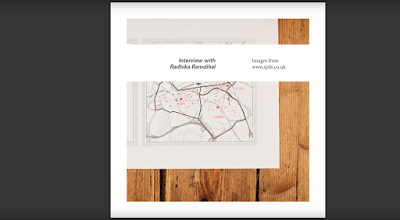OUGD502 - Module Evaluation
This module has helped me to reflect on the year and consider key parts of my practice and interests that I have. I have been able to identify themes within my work, processes and ways of working which I prefer and want to continue with. However I have also found that I have quite a varied practice but experimentation and three dimensional work is something that is used frequently within my work. I have also found that I have quite a few interests outside of Graphic Design but that are still creative. PPP has encouraged me to start thinking about how these can be incorporated more into my practice so that these different elements begin to blend into my work.
The creative report was a difficult task mainly because not many people got back to me which was frustrating. However there were positives to this as it made me consider further avenues that I was interested in and who I could contact to get a response. Research is important when contacting people as you have more understanding about them and their work and provides a conversation starter if you show an interest in a particular part of their work. The creative report allowed me to better understand a wider variety of jobs available within the industry.
Presenting is still difficult, however I feel that I am able to present more confidently despite still being nervous. Presenting in front of larger groups of people is more daunting, such as when we did the pitch, however this was made easier by doing it with someone else as we could bounce off one another. Having lots of images and minimal text makes a presentation more visually engaging and illustrates points better, whilst also prompting things to say. Having notes as a back up is useful if I get stuck however its best to work off the presentation. I have learnt that practicing a presentation multiple times before doing it in front of people means that you get a better sense of how long it will be and allows you to familarise yourself with the flow of the presentation and what you will say. This preparation makes a presentation look more confident and allows you to look up and talk more naturally about the topic.
This module has given me a better understanding of some of the avenues in which I could go down, whether this be starting a business, creating products or working in a studio. I have also discovered that perhaps a studio is not for me and starting a business could be interesting, however if I was to work in a studio I would be more inclined to work in a smaller one. The module has encouraged me to be open minded about what I could do creatively.
From what I have learnt about my practice and interests I want to explore these further over the Summer and in Level 6 to start developing some direction, whether this be a business or working for a studio.



































